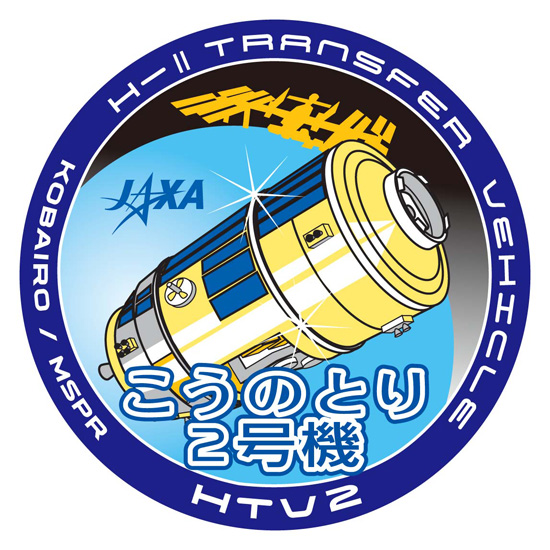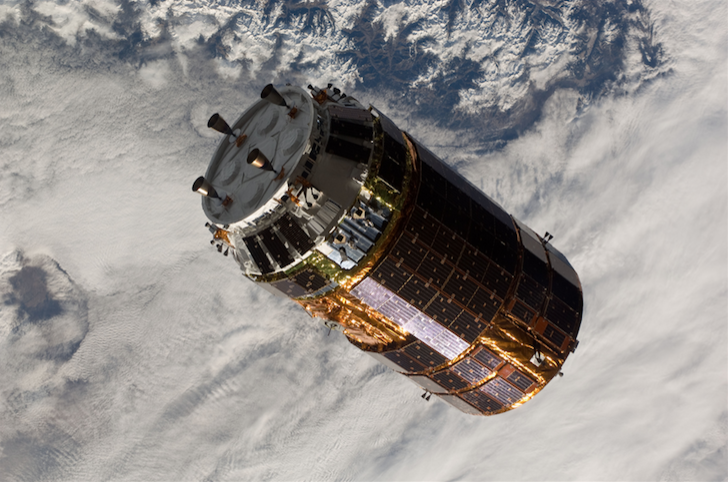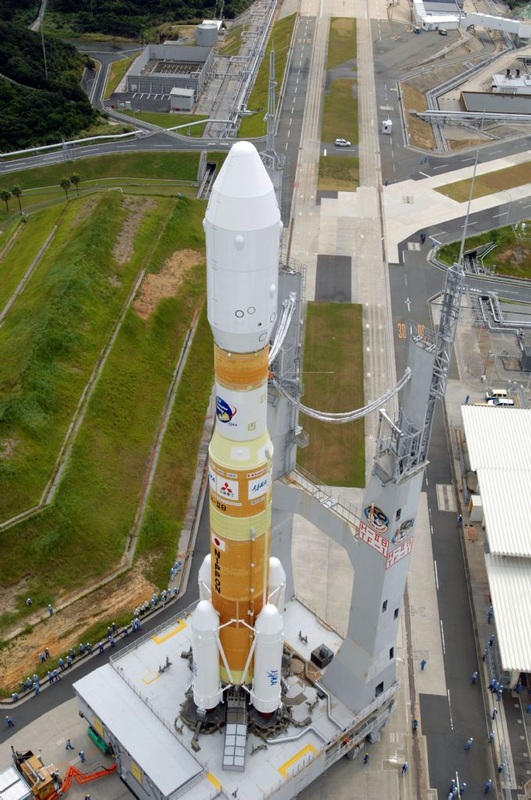

The H-II Transfer Vehicle was manufactured by Mitsubishi Heavy Industries. It has an approximate length of 9.8 meters (32.2 feet) and diameter of 4.4 meters (14.4 feet). Kounotori 2 carried 5,300 kilograms (11,685 pounds) of supplies and equipment. The transfer vehicle docked at the ISS on 27 January and remained at the station for 22 days. It empty transfer vehicle reentered the atmosphere on 30 March 2011 and was destroyed.


The H-IIB orbital launch vehicle is 56.6 meters (185.7 feet) long, with a diameter of 5.2 meters (17.1 feet). Excluding the payload, the rocket has a mass of 531 metric tons (1,170,655 pounds). It is capable of lifting a 19,000 kilogram (41,888 pounds) payload to low Earth orbit, or 8,000 kilograms (17,637 pounds) to a geosynchronous orbit.
The first stage is 38 meters (124.7 feet) long. It has two Mitsubishi LE-7A rocket engines, each rated at 843 kiloNewtons (189,514 pounds) of thrust at Sea Level, and 1,074 kiloNewtons (241,445 pounds) of thrust in vacuum. These engines burn liquid hydrogen propellant with liquid oxygen.
The first stage is equipped with four SRB-A “strap-on” solid rocket boosters, each rated at 2,305 kiloNewtons (518,185 pounds) of thrust, burning polibutadiene.
The total thrust of the H-IIB at launch is 10,907 kiloNewtons (2,451,991 pounds). The solid boosters burn for 1 minute, 54 seconds, while the main engines burn for another 3 minutes, 58 seconds.
The second stage is 11 meters (36.1 feet) long with a diameter of 4 meters (13.1 feet). It is powered by a single Mitsubishi LE-5B engine rated 137.2 kiloNewtons (30,844 pounds) of thrust. It also is fueled with liquid hydrogen and liquid oxygen. It second stage burn time is 8 minutes, 19 seconds.
Kounotori 2/H-IIB 304 was the second launch of a H-IIB rocket. As of August 2015, there have been 5 successful launches.

© 2019, Bryan R. Swopes